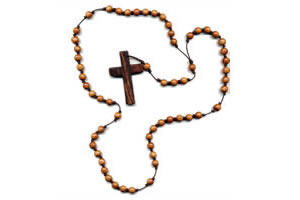
A witch helped me become a Christian. OK, the biographical blurbs on Tamora Pierce's book jackets don't actually call her a witch, but they do say that she's taught witchcraft; close enough. Pierce is the author of several children's fantasy series, of which the most famous is probably the Alanna! series. The Alanna books are not exactly the kind of thing you'd give as first communion presents. Magic in these books is treated like science: witchcraft is intrinsically neither good nor bad; it all depends on who's using it and why. There's a pantheon of gods, including the Crooked God of law-breaking. Premarital sex is a nonissue (although it isn't shown in the books, just alluded to). There's even a scene in which Alanna gets a magical contraceptive charm.The article - entitled "Outside Narnia: Children's Fantasy and Christianity" - continues with Tushnet's three views of how Christianity appears in children's literature. She identifies the first method as submerged Christian allegory or parable, noting the familiar approaches taken by C.S. Lewis and J.R.R. Tolkien.
The second approach is life embedded in a Christian culture. In these books, Christianity is taken for granted as the truth about the world and the major force shaping the characters' society. John Bellairs and Margot Benary-Isbert are two strikingly different examples. Bellairs wrote spooky Gothic mysteries featuring anxiety-ridden Catholic kids trying to unravel the demonic workings of evil spirits; Benary-Isbert wrote The Wicked Enchantment, a sweet, commonsensical confection about the need for love and forgiveness. Bellairs used many Catholic trappings - the Urim and the Thummim feature in one book, the Litany of Loreto in another - but more importantly, Catholicism is simply assumed. That makes the books' spiritual world more than a little iffy. All those assumptions leave little room for deeply felt faith; Bellairs succumbs to the temptation often cited by evangelical Protestants, in which "Catholic culture" crowds out Jesus. Bellairs's books probably would not pass the stringent purity tests that some Catholic parents would apply to their children's reading. Benary-Isbert, too, focuses o!n the culture (life lived with the sound of the cathedral bells always in the background) and not the faith that sustains it. But her story, which takes place during Holy Week, has a very Christian "message" and nothing to offend parents. (It also has a great message about localism and freedom, by the way.) These books were clearly not meant to be didactic; the authors wrote about a Catholic world because that's what they knew.For the record, she cites Ottfried Preussler's The Satanic Mill as the only representative of the third approach: "clearly, almost brazenly Christian from start to finish."
What's you take on Bellairs's inclusion of Catholic elements in his stories? As Tushnet says "the authors wrote about a Catholic world because that's what they knew" and that's very true with John: attending Roman Catholic church in Marshall, attending Notre Dame, and composing his first book of short, satiric essays on the life and times of of a fidgety saint and others comments surrounding the then-current Second Vatican Council. He wrote what he knew and was he was comfortable with - but how do readers view his Catholicism up against plots Doomsday and black magic? Is it a turn-off or something to set the mood?

No comments:
Post a Comment